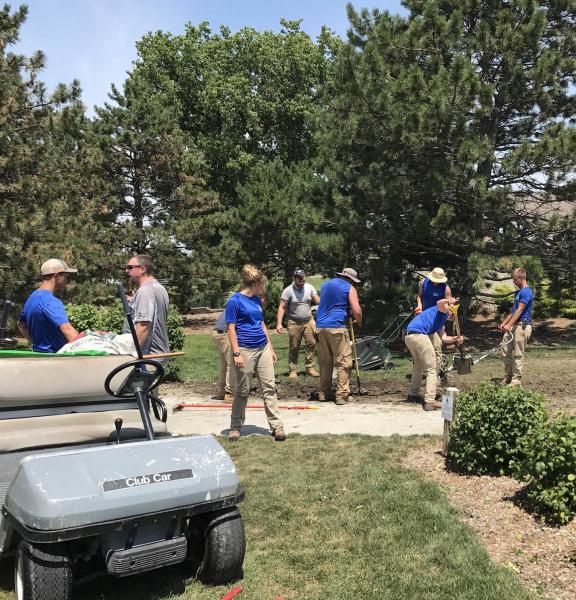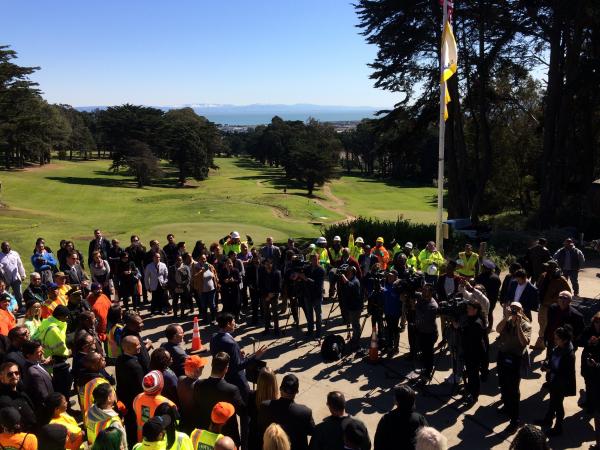Part II in an ongoing series about labor issues affecting the golf industry.
Gleneagles and Highland Meadows are separated by 2,500 miles, and the spaces they occupy in golf's unspoken hierarchy are even farther apart.
 Gleneagles Golf Course at McLaren Park is the San Francisco muni that, if not for the vision and efforts of manager and operator Tom Hsieh, probably would have been cast onto the ever-growing heap of closed courses years ago.
Gleneagles Golf Course at McLaren Park is the San Francisco muni that, if not for the vision and efforts of manager and operator Tom Hsieh, probably would have been cast onto the ever-growing heap of closed courses years ago.Located in the Toledo, Ohio suburb of Sylvania, Highland Meadows is the longtime home of the LPGA's Marathon Classic, formerly the Jamie Farr Owens Corning Classic, and occupies the other end of the spectrum.
Despite the economic differences between Gleneagles and Highland Meadows, the courses share a common bond - a struggle to attract enough hourly talent. And both have looked to some unique sources to fill that void.
At Highland Meadows, superintendent Greg Pattinson figured there is strength in numbers, and that's why he's partnered with a local park to attract workers who, throughout the golf season, spend time at both facilities.
Since 2015, Hsieh has been working with a local labor union in the Bay area to provide unskilled labor in a pre-apprentice program that provides training and hope for at-risk residents from one of the city's worst neighborhoods.
In Sylvania, Pacesetter Park encompasses 138 acres of trails, practice and game day soccer fields and eight baseball and softball fields.
Together, the park and Highland Meadows, which has been the site of Toledo's LPGA tournament in its various iterations since 1989, have targeted five area schools in northwestern Ohio and southeastern Michigan that have agriculture or horticulture programs.
"It's helped us target people who already are interested in our field," Pattinson said. "There's not a lot of weeding out. Whether it's turf, farming, greenhouses or something similar, at least 50 percent of the people we target are interested in working for us."
In year one of the program last year, the park and golf course split the workers and traded them back and forth every couple of weeks. This year, the entire group will spend more time at one location then shift en masse to the other.
"We tweaked the program this year to leave them at each facility for a month at a time," Pattinson said. "It just wasn't enough time before."
Similarly, the training program at Gleneagles in San Francisco provides Hsieh with much-needed help. It also gives workers, many of whom come from the local community on San Francisco's downtrodden southeast side that was a 5-iron away from where Candlestick Park once stood, with a second chance to lead a productive life.
The principal of Gleneagles Golf Partners, which holds the management contract on the golf course, Hsieh's roots are in San Francisco politics, namely as a campaign advisor. He knows enough about golf that he doesn't want historic Gleneagles, which doesn't receive financial support from the city like its muni siblings Harding Park and Sharp Park, to go away.
"I'm winging it. I'm not a golf industry insider," Hsieh said. "There are no boundaries for me except to be open-minded. If something doesn't work, we change and move on to the next thing."
 Fortunately for Hsieh, the pre-apprentice program works for parties on both sides.
Fortunately for Hsieh, the pre-apprentice program works for parties on both sides.Named for a local union leader, the Mario de la Torre Training Academy at Gleneagles provides pre-apprenticeship training for up to a dozen low-level city workers, most of whom come from a past that is, at best, sketchy.
Those accepted into the program learn how to work on a golf course in incremental steps. They start with pulling weeds and clearing debris to raking bunkers and operating equipment. After each six-week session,graduates receive a union pre-apprenticeship certificate that allows them to apply for apprenticeship training so they can compete for other union jobs that offer better pay and benefits and a chance at a real future, which is something most of them didn't have before.
A storage facility at the golf course has been repurposed - thanks to union-provided labor - into a classroom to help facilitate training.
The program is a joint effort that includes the Northern California District Council of Laborers, Local 26 and a host of city and county agencies (parks alliance, public utilities commission, public works, housing authority, department of environment, chief administrator's office, board of supervisors, mayor's office, unified school district).
The academy's goal is to equip at-risk residents with training and skills needed to be successful at work and in life. Two managers employed by Local 261 handle all training.
The program, which provides on-the-job training for as many as 70 people per year, lost one of its staunchest allies last year when San Francisco mayor Ed Lee died unexpectedly.
In the meantime, interim Mayor Mark Farrell and others renewed the city's support of the training program and what it means for golfers and San Francisco's at-risk community when they visited the site in February to honor the latest group of graduates from the training program.
While it's important for Hsieh to help his neighbors, his ability to do so means saving the golf course first.
"We're helping individuals and their families," Hsieh said. "But this golf course is important too. If it doesn't make it, we're not able to do that."

